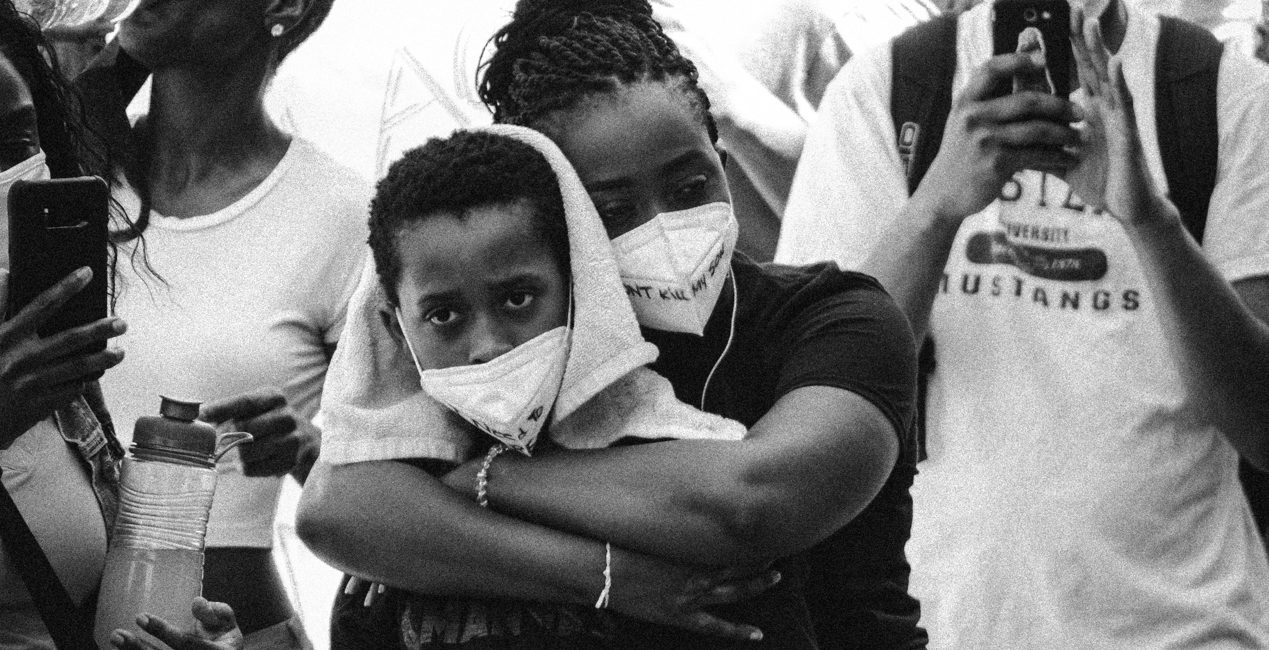College Students of Color: Overcoming Racial Disparities and Discrimination

Posted in: Young Adults
Topics: College Mental Health, Hot Topics, Stress
This post is one of a four-part series on college student mental health. The other posts in this series are:
- LGBTQ Students in College: Fostering Inclusion, Acceptance, and Safety
- International College Students: Challenges and Solutions
- The Challenges of First-Generation College Students
***
Diversity allows us to embrace humanity in a broader way, and to educate and improve ourselves. Today, college campuses are more diverse than ever, and students of color make up over 45% of college populations. Diversity on a campus offers all students an ability to understand, learn from, and appreciate differences in racial, ethnic, and cultural backgrounds.
But even as student diversity increases in higher education, racial disparities remain significant.
Racial Disparities in Colleges
Despite increasing rates of college admissions and enrollment among students of color, they are still much less likely to graduate. Students of color, but specifically Black students, continue to struggle with lower rates of staying enrolled from semester to semester, higher rates of dropout, and the highest borrowing rates and largest debt burden. And among those who complete college, Black graduates have lower salaries and higher unemployment rates than any other group. The gender gap in Black students is also wider than in any other group, with nearly two out of three Black college students being women.
On campus, students are more likely to encounter people of color in service jobs than in faculty positions or in leadership. College faculty, staff, and administration are still predominantly White – almost 75% of faculty are White, and people of color represent less than one in five senior executives.
Students of color are more likely to experience racism, discrimination, Islamophobia, cyberbullying, verbal and physical assaults, and micro-aggressions on campuses and within their college towns and communities – all of which are damaging to their mental health. These experiences can also lead to alienation, isolation, marginalization and loneliness, further compounding the negative impact on mental health.
Although mental health problems are similar across all racial groups, students of color are less likely to be diagnosed with mental illness, and they are less likely to seek treatment. Barriers to treatment can be due to stigma, lack of awareness of mental health services, and distrust of mental health professionals who lack cultural competence – all of which lead to lower utilization of mental health services.
Compared with White students, college students of color report higher rates of loneliness and emotional stress, anxiety, depression, and hopelessness. Untreated mental illness can hinder a student’s academic performance, as well as their social and emotional well-being.
College Mental Health During a Global Pandemic
While systemic and structural racism has taken an emotional toll on students of color and hindered progress in addressing mental health challenges, this has been exacerbated during COVID-19.
As the result of COVID-19, nearly 33% of minority high school seniors have had to change their top college choice, compared to 15% of White high school seniors. For those in college, one in three students of color, compared to one in five White students, were worried about contracting COVID-19 on campus.
Students of color are experiencing a far greater burden during the pandemic as compared to White students. COVID-19 has had a greater impact on communities of color, resulting in greater loss of loved ones, more financial and housing challenges, less access to the technology needed to engage in academic obligations, and inadequate access to healthcare. Additionally, with colleges moving to remote learning, accessing school mental health services has been challenging, leaving many students without care.
Unrest and Activism at College
In the current political climate and state of unrest in our nation, many college students of color are feeling significant emotional stress and distress. This is increasing the elevated risk for mental health challenges they already faced as the result of engaging in the movement for social justice and racial equality.
Engaging in social justice activism, including educating and sharing experiences with peers, can take away from the time and energy required for academic success. Taking on the extra burden of this role also carries a hefty emotional toll from the frequent re-telling of their experiences of discrimination and violence. Students of color in these situations often feel unheard and unsupported on campuses and in their college towns, and may even face hostility or be labeled as ‘trouble-makers’ or ‘students of concern.’
What Can Colleges Do? Positive Actions and Protective Factors
What can colleges and universities do to better support students of color? A first step is creating an environment in which students of color can feel supported and included.
Some positive actions that can help to lessen the risks for students of color experiencing emotional distress, social isolation, and for some, leaving school, include:
- Recruiting and retaining diverse staff and faculty
- Developing and maintaining cultural supports
- Hiring culturally competent mental health providers from diverse cultural backgrounds
Other efforts are investing in initiatives and activities that improve equity and inclusion on campus. Programs like this support protective factors like the ones below, which help to offset the emotional distress students may experience:
- Social support
- Feeling a sense of belonging (often from interactions with those of a similar cultural background)
- Cultural pride
What Can Students Of Color Do?
- Engage in Activism. While activism can pose the risk of increasing the emotional toll and burden on students of color, activism can also be a powerful protective factor. Activism can provide students of color with a sense of community, agency and efficacy.
- Meet With Other Students of Color for Support: It’s valuable for students to have conversations with others who are experiencing similar circumstances, to share stories, and provide support.
- Talk With Your Family: Family members often are unaware of the issues and problems their students face on campus. Share information about your college life and your concerns as a student of color.
- Engage in Self-Care: Spend time on activities that will improve your physical and mental well-being and resilience. Here are a few ideas from college students of color.
- Seek confidential help if you are struggling with a mental health problem.
How Can You Be An Ally?
- Confront your own biases by looking closely at the prejudices or preconceived ideas you might be holding onto.
- Don’t make assumptions about someone who is different from you.
- Treat all people with respect, and be open to learning from students about their diverse backgrounds without judgement. Speak up if you hear someone else being disrespectful.
- Advocate for safe spaces where students of color can gather, talk freely with each other about their challenges, and seek and share support.
- Participate in forums and public conversations that decrease the stigma of mental health issues.
- Advocate for more diversity among faculty and guest lecturers and forums on topics of interest that can bring broader cultural perspective to all students.
- Advocate for campus-wide cultural competency and sensitivity training, including Mental Health First Aid training programs that will benefit all faculty, staff and students.
It is everyone’s responsibility to make campuses more welcoming, inclusive, and understanding of students of color. These are just a few ways we can all make a start.

 Share
Share Tweet
Tweet






